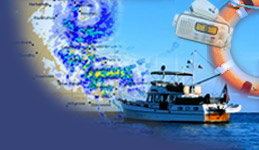Prepare Vessel for Refuelling or Fuel Transfer Operation | Refuelling Equipment |
Different Refuelling Methods
Below are some examples of refuelling methods, depending on the refuelling method chosen, you may need to check the coupling is secure or a proper sized funnel is used.
Best PracticeSealed coupling used for refuelling from wharf dispenser or road tanker |
Next Best Practice Refuelling by hand dispenser – |
Least Preferred PracticeDecanting of fuel by hand increases the chance of spillage and back strain injury |
|
 |
Fuel HosesPrior to refuelling, fuel hoses should roll the hose out and ensure that it is free from leaks and kinks and in good condition. If any doubt exists, about the condition of the hose do not use it. Fuel supply trucks often provide this equipment.
|
 |
Drip TraysDrip trays must be fitted underneath fuel tank vents prior to refuelling. During refuelling it is common for the vent to release small amounts of fuel as air is expelled from the fuel tank. As air is expelled you may hear a spluttering or gurgling sound. If possible, the drip tray should be fitted and secured into position or monitored by an extra person. |
 |
Absorbent RagIt is useful to have an absorbent rag or cloth close hand which can be used to mop up and contain any small spills. Upon completion of the refuelling operation, the rag will also be useful to wipe the end of the fuel nozzle. The absorbent rag or cloth should not be discarded into the bilge areas of the boat where it may become a fire hazard. |
 |
Covers for Deck ScuppersWhile deck scuppers serve a useful purpose in dispensing extra water from the decks surface, they also have the potential to release fuel and other hazards into the marine environment. To prevent this from occurring, deck scuppers should be covered with an absorbent rag or similar device. |
 |
Earth StrapAll commercial vessels require an earth strap to be fitted before refuelling operations. This is required because a static electrical charge can build up during refuelling when the fuel moves through a pipe. The fuel may become negatively charged and the pipe positive. The negatively charged fuel, in turn, causes the tank to become positively charged. The risk of ignition thus continues. To safeguard against build up of static electricity charge during refuelling, the refuelling system must be bonded and grounded via an earth strap. |
 |
Suitable ExtinguisherYou should have a fire extinguisher on hand in the event of fuel igniting. For more information on how to fight fires and appropriate use of fire extinguishers, see topic Fire Fighting. With this equipment in place you are now ready to commence the refuelling or fuel transfer operation. |
 |
| back to top |



